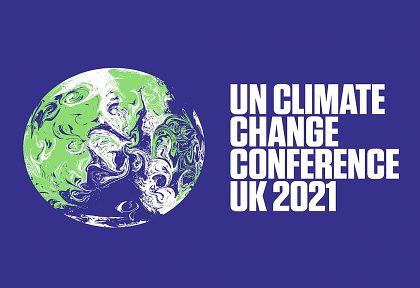
The COP is the acronym for "Conference of the Parties". Under the acronym COP we can find several conferences under the UN (climate change, biodiversity, desertification). The OEaB team participates annually in the UN and Climate Change Climate Conference, this year it was ranked 26th.
In addition to the UN Convention on Climate Change, the COP also serves as the Conference of the Parties to the Kyoto Protocol (16th) and the Parties to the Paris Agreement (3rd). It is the highest decision-making body of the Convention.
The conference itself takes place at the political and technical level. The political level (High Level Sequment) is dedicated to meetings of the highest representatives of states - presidents or ministers. These negotiations usually last 3 or 4 days, are closely monitored by the media and countries announce their goals and ambitions (for example, India, which declared its ambition at COP26 to achieve carbon neutrality by 2070), or join various initiatives (deforestation, ending coal use, increasing ambition of targets).
The second level are the technical negotiations, which are tracked by the memebers of the department. These negotiations take place under the mandate of the Subsidiary Bodies(SBs). These include the Subsidiary body ofr Scientific and Technological Advice (SBSTA) and the Subsidiary body fo Implementation (SBI). The work consists in finding an agreement in a binding form for statements made at the political level. This is a very technical and specific task, in which it is necessary to think about all the details and respect the cultural and social differences between countries, so that the agreement is acceptable to all UN countries. At some points on the agenda, reaching a consensus is initially an unattainable goal. But through the experience of the negotiators and the search for a compromise, often an exhaustive discussion from early morning to late night, the decision get an exact structure and shape. An example of such a long-term debate are the agenda items under the Transparency Framework, which cover information and reporting on emissions and overlaps with other items such as climate finance, adaptation to climate change, etc. In addition to the transparency framework, the members of the department monitor the assessment and implementation of the latest scientific knowledge from, for example, the WMO (World Meteorological Organization), the IPCC (Intergovernmental Panel on Climate Change) and other scientific organizations into the conclusions of the conference.
Agriculture is also a very important topic. Koronivia Joint Work on Agriculture (KJWA) was a landmark decision (Decision 4 / CP.23) of the 23rd Conference of the Parties chaired by Fiji. It aims for exchange of information on good agricultural practice between the member states of the Convention. It is an inclusive process in which countries and observers present their views and recommendations on six established topics related to soil, nutrient use, water, livestock, adaptation assessment methods and the socio-economic dimensions of climate change and food security within the agricultural sectors through submissions, which are discussed at workshops organized by the UNFCCC Secretariat. The aim of the discussions and mutual cooperation is to ensure the development of agriculture so that the potential for emission capture is maximized, the food security of countries is ensured, indigenous peoples dependent on agricultural activity are protected and gender equality between farmers is improved.
To conclude the agenda at the conference, an unanimous consent of all parties involved must be obtained. In the moment a country has objections to the proposed text, a compromise must be sought that suits all parties. Finding this compromise is quite hard and negotiations are made for every word in the conclusions. It sounds strange, but changing one word for, for the average person sounding synonymous, another word can change the meaning of the whole text. In the absence of such consent, two situations may arise:
- Some countries request the application of "Rule 16", which means that negotiations are stopped and moved to the next meeting in half a year. During this period, there is an intense debate on how to overcome disagreements to reach a common conclusion.
- The Chair of the SB will collect all arguments and positions of the countries and refers the matter to the President of the COP, who decides whether to move the agenda item in accordance with point 1, prepare the decision himself/herself, or discuss it further, but directly under the COP mandate.
In addition to official meetings, side events take place during the conference, such as presentations, discussions and workshops. Each day of the conference is dedicated to a different theme. During the day, there are presentations on good practice, how to implement measures, how to exchange experiences and so on. In the long run, there is an agreement on a fixed theme for a given day. These topics are (in order from the first day of the conference): High Level Segment; Finance; Energy; Youth and Public empowerment; Nature; Adaptation, Losses and Damage; Gender, Science and Innovation; Cities, regions and built environment.

